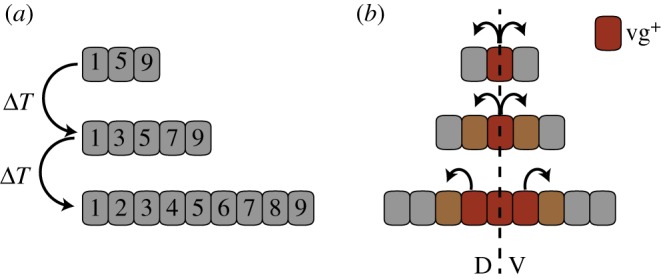Figure 4.

Intercalation models. (a) The intercalation model. According to the intercalation model, cells possess a positional value that is assigned at their ‘birth’ (here indicated by a number). Proliferation is assumed to be proportional to the difference in the positional value between neighbouring cells. ‘Newborn’ cells intercalate between the cells and assume an intermediate positional value. Proliferation stops as the difference in the positional values of neigbouring cells becomes too small. (b) The feed-forward model proposes that cells are recruited to a wing pouch fate starting from the dorso (D)–ventral (V) axis. Cells that have been recruited to a wing pouch fate start expressing vestigial (vg+, red) and are then capable of inducing this fate in neighbouring cells. At the same time, this mechanism generates a biochemical differential that is translated into increased proliferation.
